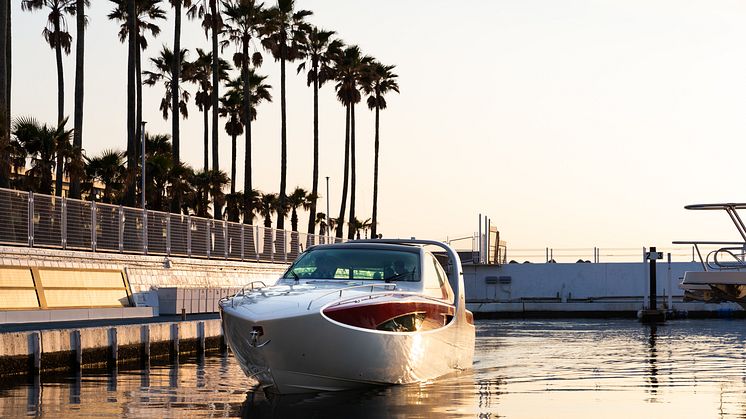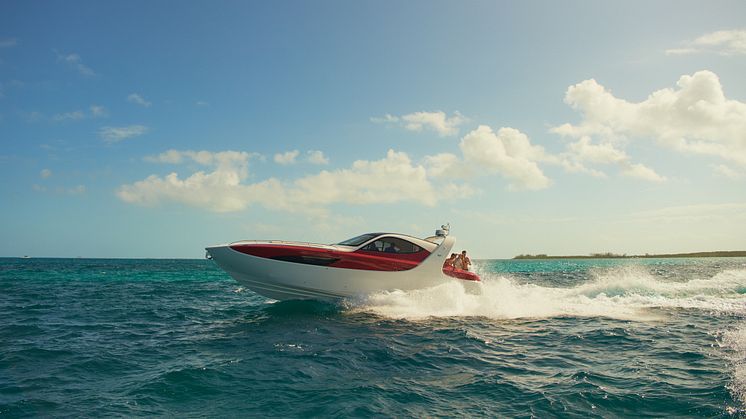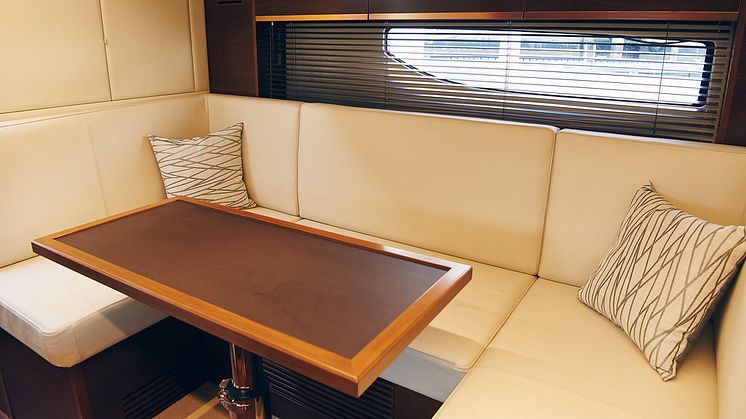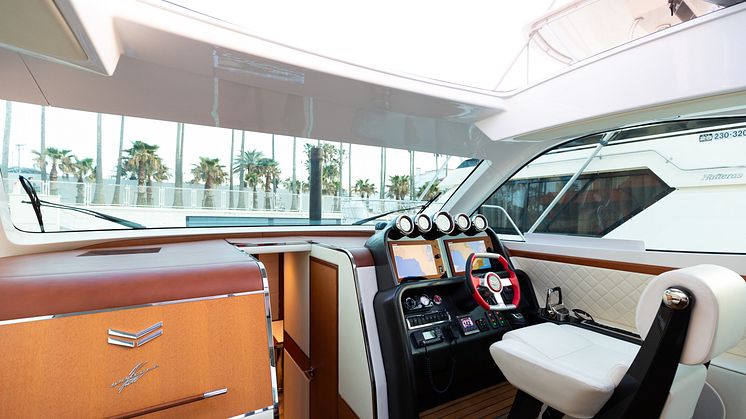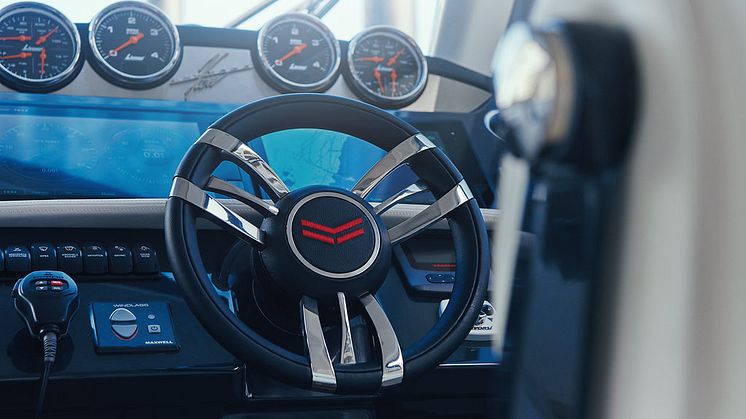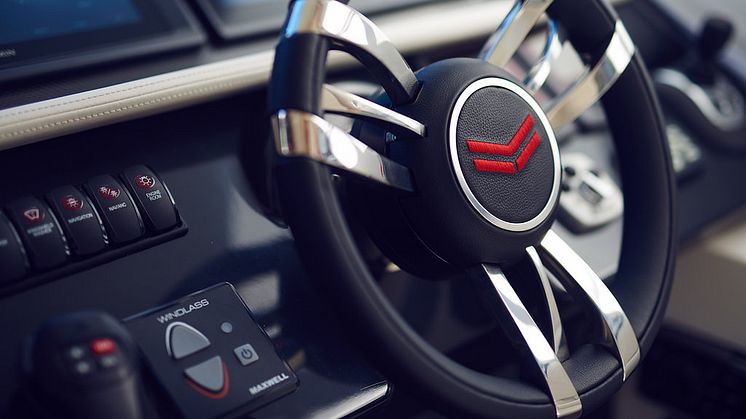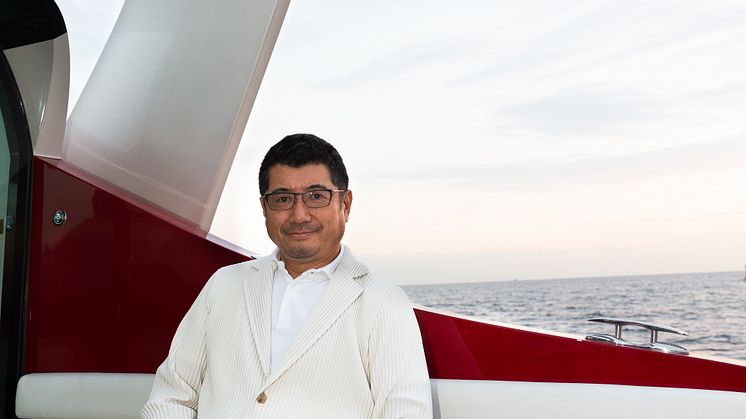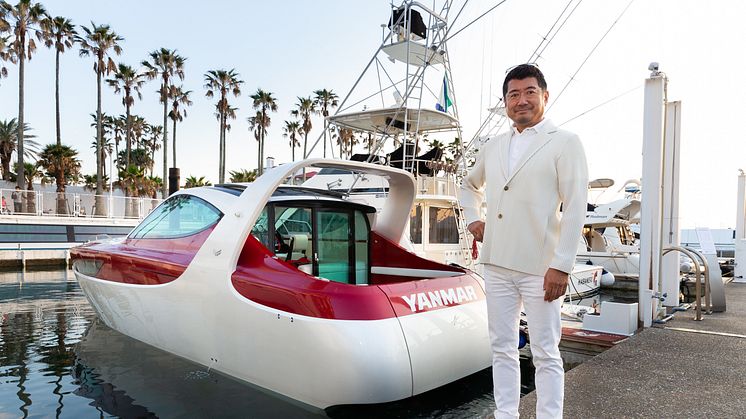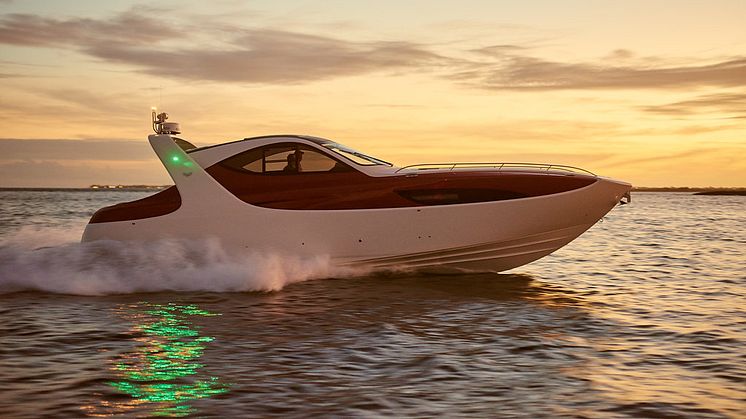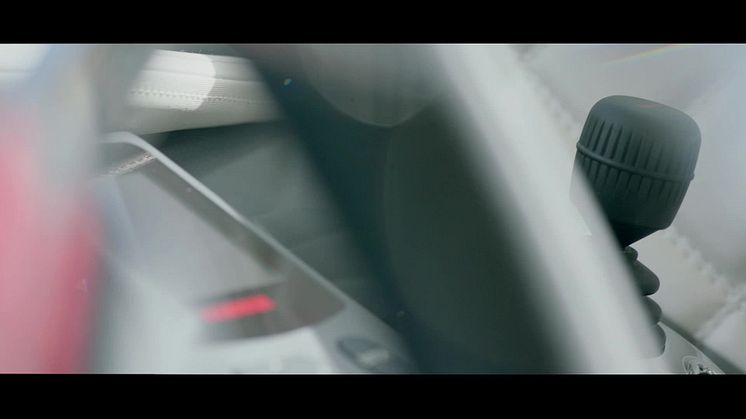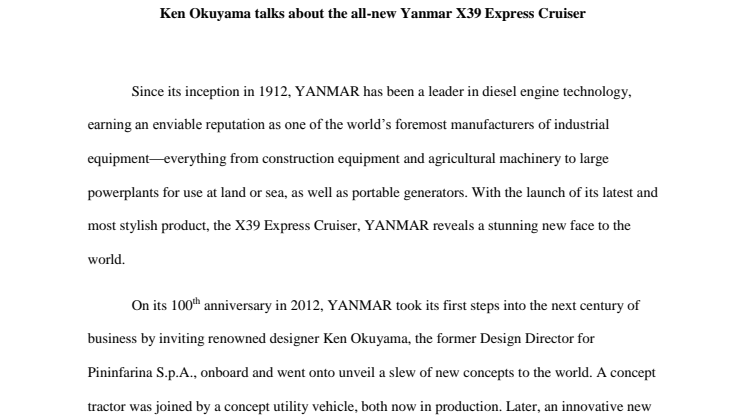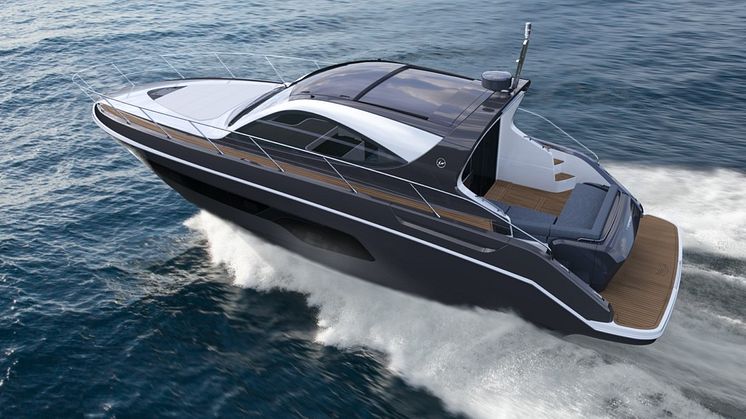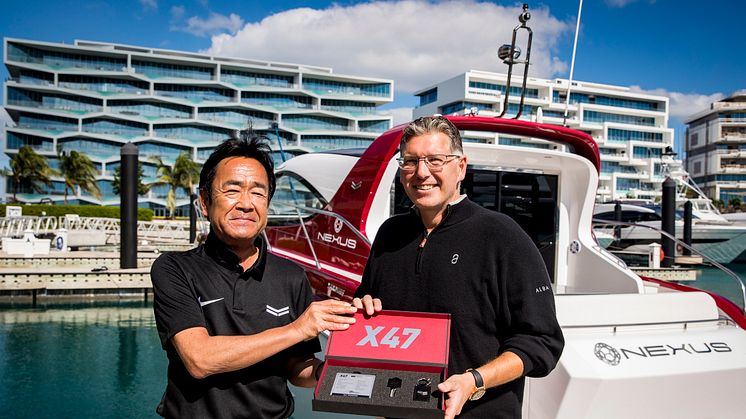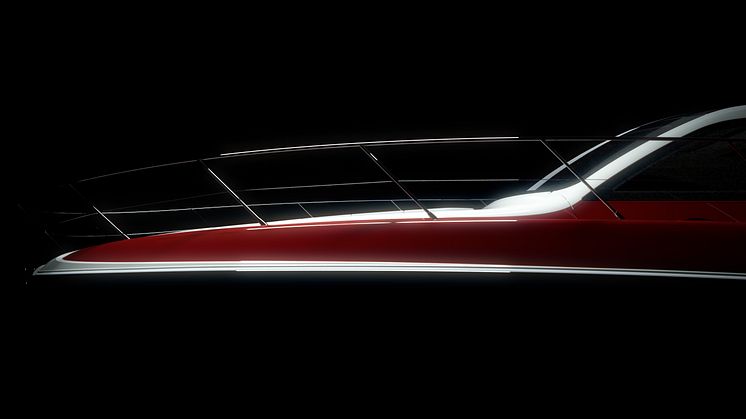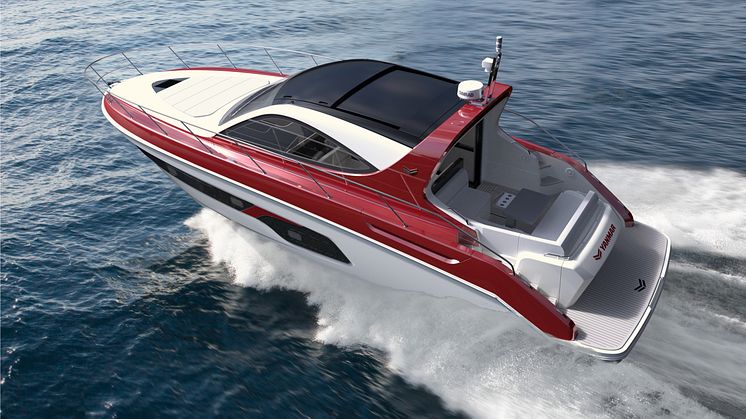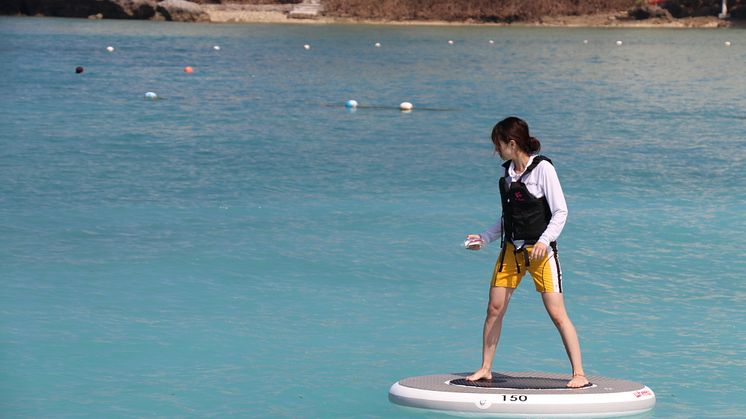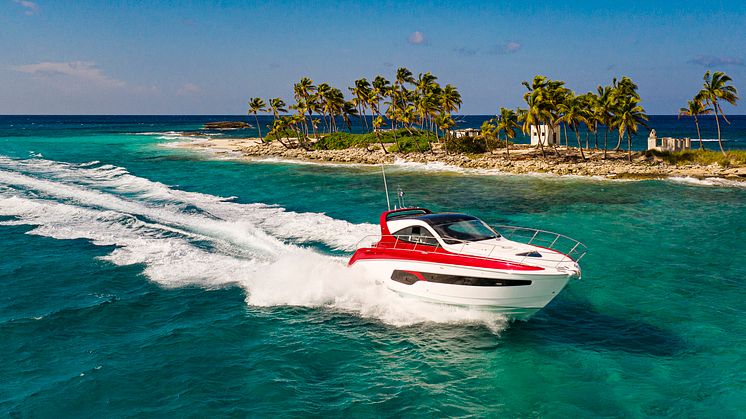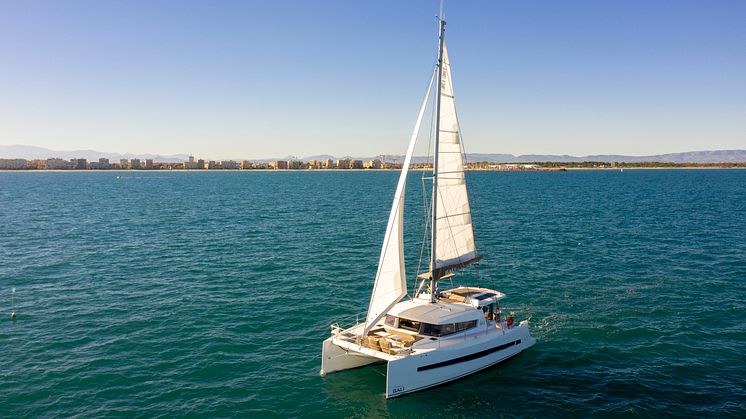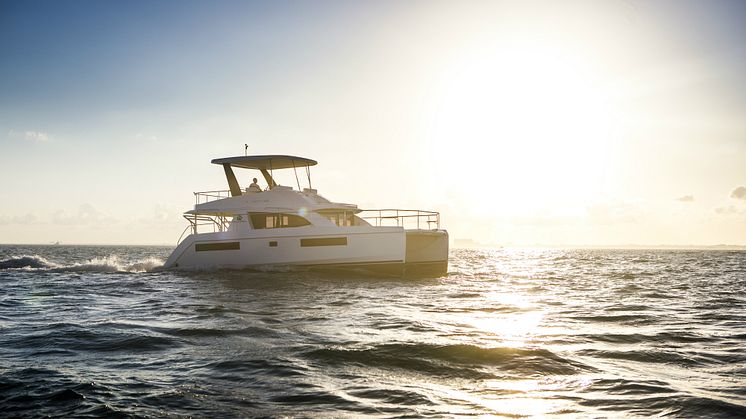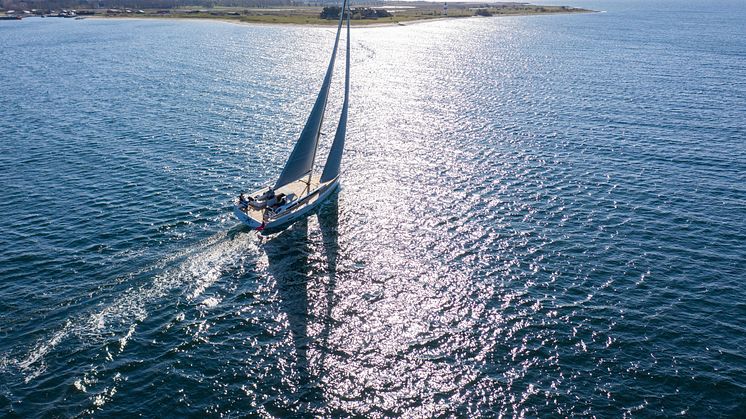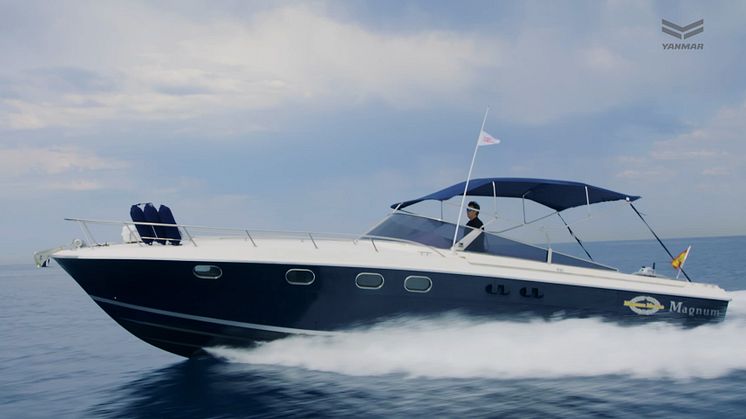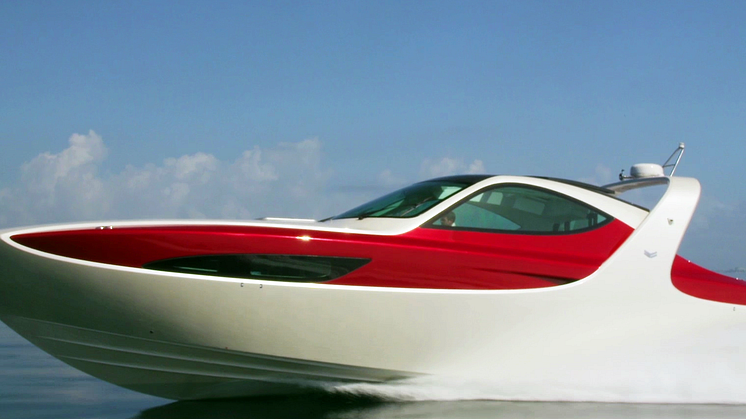
News -
Ken Okuyama talks about the all-new Yanmar X39 Express Cruiser
Since its inception in 1912, YANMAR has been a leader in diesel engine technology, earning an enviable reputation as one of the world’s foremost manufacturers of industrial equipment—everything from construction equipment and agricultural machinery to large powerplants for use at land or sea, as well as portable generators. With the launch of its latest and most stylish product, the X39 Express Cruiser, YANMAR reveals a stunning new face to the world.
On its 100th anniversary in 2012, YANMAR took its first steps into the next century of business by inviting renowned designer Ken Okuyama, the former Design Director for Pininfarina S.p.A., onboard and went onto unveil a slew of new concepts to the world. A concept tractor was joined by a concept utility vehicle, both now in production. Later, an innovative new headquarters would also provide a model for the future. However, the it was this groundbreaking concept boat that drew the most attention and helped establish a new brand image for YANMAR.
The X39 showcases the company’s latest technology, superlative build quality and materials, and design potential. For Okuyama—who also serves as an executive of YANMAR—the X39 represents a new halo product for the company, one that he hopes will lead the way as the company embarks on its next century. He recently sat down for an interview about what went into creating the YANMAR X39 Express Cruiser.
OVERVIEW
What is the YANMAR X39 Express Cruiser?
KO: The new YANMAR X39 Express Cruiser is a unique concept for a recreational marine vessel, as its design is something between a powerboat and a cabin cruiser. Here at YANMAR, we call this new type of marine craft an “Express Cruiser.”
With its sleek hull and strikingly bold character lines, the X39 has the look of a powerboat, but inside you will discover that there is a lot of space—a very usable interior layout and plenty of volume—like that of a well-designed cabin cruiser.
What exactly is an Express Cruiser?
KO: Powerboats are usually characterized by a long nose (foredeck), while cabin cruisers, which often have a one- or two-story cabin, don’t necessarily have the appearance of looking fast or cool. But the Express Cruiser takes the best of both worlds by having a very sleek shape of a powerboat—you can see this in its proportions of the long nose and short deck—as well as an ample, convenient and usable interior space of a cabin cruiser.
So, the X39 is both a powerboat and a luxury cruiser?
KO: Yes. It does boast a lot of performance, thanks to YANMAR’s diesel engines. These are positioned in the back of the hull with something we call a stern drive. This is a really efficient type of packaging that maximizes capability. Each engine is rated at 370 horsepower, which totals 740, but for those customers who want even more, they can order more powerful engines.
The luxury part of the equation is represented by the cabin, or more specifically the boat’s two staterooms (bedrooms) and large bathroom. There’s also a spacious and well-equipped galley (kitchen), a lounge in back, and a large rear deck. The cabin is quite expansive, and you wouldn’t guess it had this much space when seeing the X39 from the outside. It possesses a nice balance of interior capacity in relation to its sleek, powerboat-inspired exterior design.
All of its engineering and design traits combine to make the X39 a very enjoyable, stylish and livable boat, with eye-catching and sporty looks, luxurious interior appointments and excellent performance that includes a top speed of up to 45 knots, which is really fast for this type of boat!
How much of your past automotive design history played a role in the design of this boat?
KO: To be honest, quite a bit as I had a long stint in automotive design. I worked as a chief designer for General Motors, a senior designer for Porsche AG, and I served as the Director of Design for Pininfarina S.p.A., where I was responsible for the Ferrari Enzo, Maserati Quattroporte and many other cars.
Had you ever designed boats before joining YANMAR?
KO: Yes. When I was at Pininfarina, I designed quite a few boats for a leading Italian yacht manufacturer.
What elements of automotive design was instilled into the X39?
KO: Well, we didn’t need to reinvent the wheel because YANMAR has a lot of experience in the fishing boat industry. We were able to use the same proven hull design that has been used for the past 30 years for the X39. The V-shape of this hull makes it very stable and strong in any weather condition, but also because the height of the cabin is not too tall, the center of gravity of the boat is fairly low. So, this makes it very stable as well. Additionally, we added structural reinforcements to the hull and the deck, so it is very rigid, very strong, but still lightweight. Therefore, you can see that this design that features a low center of gravity and an extremely rigid “chassis” are straight from the principles that define automotive design.
What does the name “X39” refer to?
KO: The “39” was derived from the vessel’s 39-foot length, and the “X” stands for “experimental,” with the intent of changing “X” to something else when we made it ready for production…however, the “X” just stuck, and we decided to keep it just the way it was because it really fit the character of the boat so well.

EXTERIOR DESIGN
What is the overall design theme of the exterior of the X39 Express Cruiser?
KO: It is an evolution of some of the previous marine vessels I’ve designed for yacht manufacturers in the past, but it is also accented by a strong influence from my automotive background, especially the high-performance sports cars I designed for Ferrari during my time at Pininfarina. I think you can see this in the radar arch, which may seem similar to the rear wing of the Ferrari F50 influence (laughter).
Is the overall effect you wanted for the exterior design of the YANMAR X39 Express Cruiser to be “sporty” or “luxury” or both?
KO: I would say that it was important for us to make sure the X39 represented both of these characteristics, as well as “futuristic” because it will serve as the halo product for the YANMAR brand, the main image maker for the company. This product shows the world that YANMAR is more than just a maker of industrial products, but a company that is full of emotion and passion, with a certain flair for style.
The X39 Express Cruiser does indeed look like the marine equivalent of a sports car. How does designing a boat compare to a sports car?
KO: I find that it is easier to design a boat because they don’t have four wheels and you don’t really have aerodynamic restrictions that sports cars have. But at the same time, you must consider the design of the hull, which is the most important exterior part of a boat. Not only does it need to be sturdy, it must be very hydrodynamic. The X39 features a fusion between the hull and the deck components, which we executed by hand, one by one, to eliminate that parting line in between. Come to think of it, I think I might be one of the few designers who has done both boat and car design to this extent, so I can say there is a strong influence.
Any cars in particular that served as inspiration for the X39?
KO: The X39 possesses the classic proportions of a well-designed front-engine, rear-drive sports car. Think of a lovely vintage Jaguar like the XKE, which is characterized by a long nose and short cabin. It’s not uncommon for customers to make sports car references when they talk about their ideal boat design, too.
Are there more elements of car design in the X39’s exterior?
KO: The primary influence can be seen in the strong red character line of the X39’s mid-section. It starts immediately below the A-pillar and moves forward to the head of the bow, then flows back through the hull and up through the radar arch, encircling the entire boat. Also, we bathed the hull in pearl white and metallic red, colors you don’t see often on a boat, but I really wanted to use red because not only is red the brand color for YANMAR, it also represents the spirit and long, rich heritage of both Italy and Japan. I’m sure if you look hard enough, you can see that the boat’s exterior design theme shares some influences with the automotive design I was executing at Pininfarina back in the early 2000s.
With the marine products that you have designed in the past, do they also possess a heavy dose of automotive-inspired design elements?
KO: None that I can think of. When I was at Pininfarina, while I did design boats for the company, I never had the freedom that was presented to me with the X39. With this project, we were able to start with a clean slate. With suggestions from the YANMAR team, along with the input of potential customers, we were given the freedom to provide the market with what it truly desired: an exciting new boat that seamlessly combines the best design and engineering characteristics of both a powerboat and a cabin cruiser.
You mentioned YANMAR’s customers. What is the relationship between you as a designer and YANMAR’s boat customers?
KO: It’s just like building houses. Architects talk to the customers, and then they discuss the details of the design. They start with a total budget and scheduling, while considering how many people the home will accommodate—and how each person wants their space designed without creating any conflicts between the family members. We pretty much have to do the same thing when designing a boat. And with YANMAR’s rich and extensive heritage in the marine industry, along with listening very carefully to customers, I think it’s fair to say that we have created the ideal product with the new Express Cruiser.
Does any form of automotive-inspired construction carry over to this new boat?
KO: In fact, there is quite a bit of influence from the construction process of automobiles with the X39. Normally, the hull and the deck are constructed separately in boat manufacturing, meaning they are two entirely separate pieces, but with the X39, we fused the two together. Therefore, we were able to incorporate a unique character line that flows through the radar arch, all because of the “one-piece/monohulled construction.” This has never before been tried in a marine/boat design.
What makes the X39’s hull design and engine unique?
KO: There are many different categories of hull design concepts, including flat bottom, V-bottom and various types of step bottoms, but what is unique about the X39 is that we have two large diesel engines sitting way in the back that are connected to a stern drive, which is mounted directly to the engine. This means that the X39 does not have an outboard motor configuration that you normally see on speedboats, but rather a system where the motor is mounted at the back of the hull and connected directly to this external stern drive. And having a stern drive makes the boat amazingly agile, and to maximize this agility, we opted for a V-shape hull which has been used for many YANMAR boats for the past 20 to 30 years for the fishing boat market.

INTERIOR DESIGN
What was your overall goal for the interior design of the X39 Express Cruiser?
KO: Borrowing automotive parlance once again, I would say that the X39 is a sports car on the outside, but once you step inside, it is like a high-end full-size sedan, sort of like a seagoing version of the Maserati Quattroporte. The main point of the interior design was to make it highly functional, but we really wanted to surprise people who first step into the cabin and find that it is much more luxurious than expected, especially after their first impression based on the powerboat-like styling of the exterior.
What makes the X39’s interior so luxurious?
KO: For one, the cabin of the boat is filled with exquisite details, from the gauges, the controls, the moldings, the handles, the corners of the tables, which all feature billet aluminum, not plastic. We wanted everything in here to be genuine and real, not fake or artificial-feeling, so we made the decision to use real leather, real wood, real carbon fiber and real stone. These are the things one would find in a high-end custom home.
Real stone? It sounds like that’s the last thing you would want weighing down a boat. Where is the stone?
KO: (Laughing) Oh, there’s not enough of it to weigh down the boat. We used it to give the cabin a more upscale look, but it is real marble that you see on the table and the kitchen cabinets. And to offset that weight, let me introduce you to the what is perhaps the industry’s first carbon fiber toilet. And yes, this thing is made out of real carbon fiber. While it wasn’t really used to make the boat lightweight, we wanted to do something unique, something that really epitomizes YANMAR’s exemplary build quality capabilities and design/engineering prowess, and we concluded that this was a design feature that would really stand out.
Touring the X39 Express Cruiser for the first time, I was pleasantly surprised that there is so much room in the staterooms (bedrooms). Was making them spacious a priority?
KO: Absolutely. I am so glad that you noticed that because that is exactly the reaction that we want people to have when they see the bedrooms for the first time.It really is a nice surprise to discover such a large master bedroom in a somewhat compact 39-foot cruiser. Also, there is a full-size shower area and a dining compartment, so the X39’s cabin can easily accommodate two couples or a whole family on multiday excursions.
Moving on to the bridge, it has the look of a car’s cockpit, especially the very sporty-looking steering wheel. Was this done on purpose?
KO: Much like the exterior, the interior has its fair share of supercar influence. We decided, for example, to use analog gauges that sit on top of the large dual instrument screens. As for the steering wheel, we decided to use the steering wheel from the kode57, a very limited-edition production car by Ken Okuyama Design that is based on the V-12-powered Ferrari 599.
Why did you decide to use analog gauges? Aren’t hey a bit outdated in this place and time?
KO: The analogue gauges provide the look of a classic sports-car cabin. I kind of enjoy seeing the analog gauges because they do represent something romantic about the past. Think about it, why are analog watches still so popular when there are digital watches available? Heck, you don’t even need a watch at all if you carry a cell phone, right? I feel that many of us still enjoy the aesthetics of a needle moving in circles. And besides, analogue gauges are more convenient in that all you need is a quick glance to get a readout, which takes less time than actually reading numbers and letters.
YANMAR X47 EXPRESS CRUISER
We hear there is a larger version of the X39 in the works. Can you talk about the next edition?
KO: We are already designing and engineering a larger version of this Express Cruiser concept. It will be a longer boat, likely destined for the U.S. and the European markets. It could possibly be sold here in Japan as well, but we feel that the X39 is a better fit here. Look for the new model to be marketed in places like Florida and the Bahamas, as well as relevant places along the Pacific Ocean, the Atlantic Ocean, and the Mediterranean Sea.


